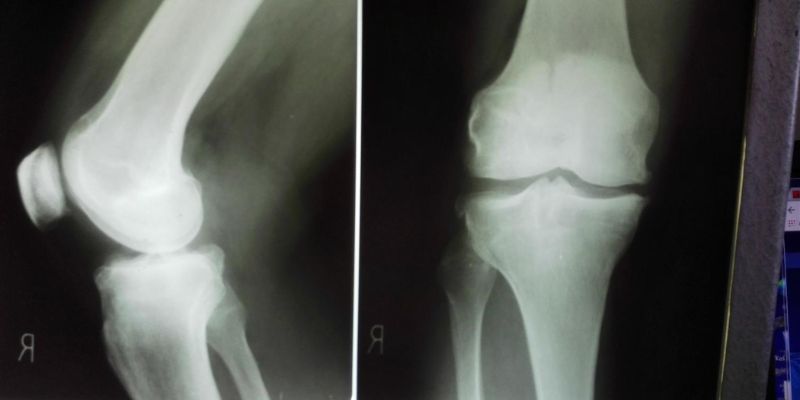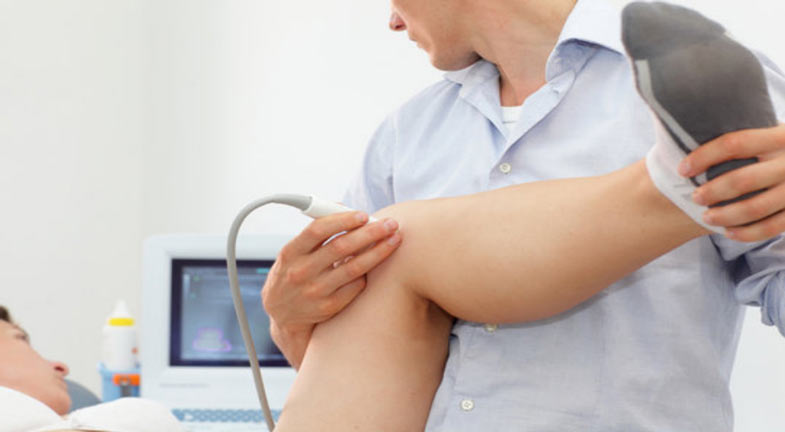Do you experience a sharp, sudden pain in your knee? You may have heard of meniscal tears, but do you know what a meniscal cyst is and how it can affect your knee joint health? Meniscal cysts are an often overlooked condition linked with arthritis or tear of the knee's medial (inner) or lateral (outer) cartilage.
This article will explain meniscal cysts, how they're caused, and how they're treated so you can make an informed decision about your health. Read on to find out more.
Understanding Meniscal Cyst
A meniscal cyst is an accumulation of fluid that develops around the knee joint. It's caused when a tear or injury in the cartilage occurs, which can be either medial (inner) or lateral (outer). The tear allows fluid to accumulate and create a pocket-like structure known as a cyst. These are typically small but can vary in size depending on the severity of the injury.
10 Symptoms of a Meniscal Cyst
1. Pain and swelling around the knee joint
2. Sensitivity to touch in the area of the cyst
3. Localized tenderness when pressure is applied to the affected area
4. Decreased range of motion in the knee joint, making it difficult to move the leg normally
5. A popping sound as you move your knee or stand up from a sitting position
6. A feeling of instability in the affected area
7. Limited ability to bear weight on that leg due to pain or instability
8. Creaking or crunching noises when you bend your knee
9. Visible lump on the outer side of your knee joint near where it bends
10. Difficulty straightening the leg completely
Diagnosing a Meniscal Cyst
Your healthcare provider can diagnose a meniscal cyst with a physical examination and imaging tests. They will check for tenderness in the cyst's area and any swelling or instability. They may also order an X-ray, computed tomography (CT) scan, or magnetic resonance imaging (MRI) to confirm the diagnosis. An MRI can provide more detailed images of the knee joint and help pinpoint where the cyst is located and how large it is.
Once a meniscal cyst is diagnosed, your healthcare provider will work with you to develop a treatment plan. Treatment options may include physical therapy and medications like anti-inflammatory drugs or corticosteroids. Surgery may be recommended if the cyst is large or significantly impacting your knee joint's function. The type of surgery performed will depend on the size and location of the cyst.
Treating a Meniscal Cyst
The treatment for meniscal cysts depends on their size and location. Smaller cysts that are not causing symptoms may not require any treatment. Physical therapy can be beneficial in helping to strengthen the knee muscles and improve range of motion. This can help relieve pressure on the cyst and reduce pain and swelling.
Medication may also be prescribed to treat the discomfort associated with a meniscal cyst. These medications include anti-inflammatory drugs (NSAIDs) or corticosteroids, which can help reduce inflammation and pain in the knee joint. Hyaluronic acid injections into the knee joint are another option for treating meniscal cysts; however, research is still being done on its effectiveness.
Surgery may be recommended in more severe cases where a cyst is causing significant pain or difficulty moving your leg. The type of surgery recommended will depend on the size and location of the cyst. Surgery may involve removing or repairing the torn cartilage, draining the cyst, or both. Recovery time can vary but typically takes several weeks to months, depending on your age and overall health.
No matter what treatment you choose, listening to your body and noticing any changes in your symptoms is important. If you experience persistent pain or swelling in your knee joint, contact your healthcare provider for further evaluation. With prompt diagnosis and proper treatment, a meniscal cyst can be managed effectively so you can return to normal activities as soon as possible.
Meniscal Cysts vs. Baker's Cysts
Meniscal and Baker's cysts are fluid-filled sacs that can form around the knee joint. While they may sound similar, these two conditions differ in their causes and treatment options.
A meniscal cyst is caused by a tear or injury to the cartilage in the knee joint, typically on the knee's inner (medial) or outer (lateral) side. The pocket of fluid that develops is called a cyst, and it can cause pain, tenderness, swelling, instability, popping noises when bending your leg, and difficulty bearing weight on your affected leg. Treatment may involve physical therapy, anti-inflammatory drugs or corticosteroids, or surgery to remove or repair torn cartilage.
On the other hand, a Baker's cyst is caused by excess fluid in the knee joint due to arthritis, gout, infection, or injury. This condition can cause pain and swelling similar to a meniscal cyst but does not involve any tears in the cartilage. Treatment typically involves using ice or heat packs on the knee, taking anti-inflammatory medications as prescribed by your healthcare provider, and occasionally draining any extra fluid from the cyst. Surgery may be necessary for severe cases.
Meniscal Cyst Knee Arthroscopy
A meniscal cyst knee arthroscopy is a procedure that your healthcare provider may recommend when you have a meniscal cyst in your knee. During this procedure, a small camera is inserted into the joint space of the knee through an incision over the area of the cyst. This helps your surgeon to see clearly within the joint and identify any tears or abnormalities in the cartilage.
Once diagnosed, your doctor will work with you to determine what treatment option is best for you. Depending on the size and location of the cyst, they may choose to perform surgery to repair or remove any torn cartilage. They may also drain any excess fluid from within the cyst if needed.
FAQs
Q: Are meniscus cysts painful?
A: Meniscal cysts generally do not cause pain, but the swelling associated with them may be uncomfortable. In some cases, the cyst can lead to instability in the knee joint or further complications, such as arthritis which can cause pain and impaired mobility.
Q: What Can I Do To Prevent Meniscus Cysts?
A: The best way to prevent meniscal cysts is to maintain a healthy weight, avoid activities that put excessive strain on your knee joint, and practice stretching and strengthening exercises for the leg muscles. Additionally, if you have any underlying health conditions that may contribute to developing a meniscal cyst, it's important to seek treatment as soon as possible.
Q: How long does a meniscal cyst take to heal?
A: The healing time for a meniscal cyst can vary depending on the severity of the tear or damage to your knee joint. Generally, it can take several weeks to several months for a meniscal cyst to heal completely. However, with proper treatment and care, most people experience relief from their symptoms within a few weeks.
Conclusion
A meniscal cyst is a common but often overlooked condition impacting knee joint health. It is important to be aware of this condition's causes, symptoms, and treatments to make an informed decision about your care. If you suspect you may have a meniscal cyst, speak with your doctor as soon as possible to ensure prompt treatment and faster healing.





